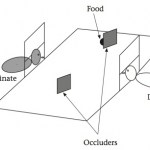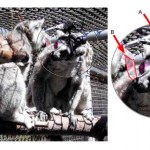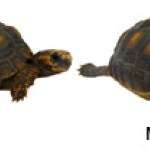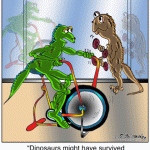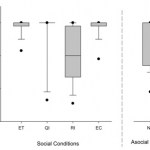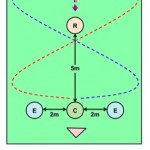Agents
You've probably had a conversation that goes something like this:
Person A: "My dog is sooooo amazing!"
You: "I mean, dogs are awesome and all, but what's so amazing about this particular dog?"
Person A: "He just understands me. It's like he knows what I'm thinking and what I need."
You: "Do you think he's just maybe responding contingently do your overt displays of emotion?"
Person A: "Listen, man, I'm telling you: my dog can read my mind!"
No matter on which side of this sort of argument you tend to fall, the question of whether or not domestic dogs can read human minds is an interesting…
In honor of Science Online, which begins on Thursday night, I will be writing about lemurs this week. Why lemurs? Because on Friday morning, as a part of Science Online, I will be taking a tour of the Duke Lemur Center.
It is common among animals - especially primates - to orient their gaze preferentially towards other individuals, as well as to follow the gaze of others. Lots of attention has been paid to gaze-following, in part because the ability to recognize and orient to the behavior of others is missing or impaired in various developmental disorders, such as autism. It is well known…
Have you ever been at a party with lots of people chatting away, when for some unexplainable reason you felt compelled to turn and look at the front door of your friend's house...and just as you were looking, someone was just coming in from outside and closing the door? You couldn't have heard the door open since there was so much noise already inside - more likely you noticed that other people were looking at the front door. All of this probably happened without any explicit intention or awareness. If several others are all directing their attention at a specific point in space, there might…
Have you ever been walking through the forest and thought to yourself, "Damn, its loud here...it's really, really hard to hear anything anybody else is saying"? Well, maybe that's what prompted Terry J. Ord and Judy A. Stamps, respectively from Harvard and UC Davis to investigate lizard exercise routines.
You ask: What do lizard calisthenics and communication have in common? Patience, grasshopper.
Dinosaurs also might have survived if they weren't eaten by giant snakes.
A noisy environment makes it particularly challenging for animals to detect communication signals from far away. In this…
In 1975, Edward Tronick and colleagues first presented the "still face experiment" to colleagues at the biennial meeting of the Society for Research in Child Development. He described a phenomenon in which an infant, after three minutes of "interaction" with a non-responsive expressionless mother, "rapidly sobers and grows wary. He makes repeated attempts to get the interaction into its usual reciprocal pattern. When these attempts fail, the infant withdraws [and] orients his face and body away from his mother with a withdrawn, hopeless facial expression." It remains one of the most…
Morality and convention are so mired in culture that it may seem near impossible to determine the extent to which biology and environment give rise to it. And yet it is possible to investigate the evolutionary origins of morality. Research with infants - especially pre-verbal infants - who have not yet been sufficiently exposed to most cultural institutions, can provide an opportunity to determine what the evolutionary and developmental building blocks are for complex moral reasoning.
Human adults evaluate individuals very quickly, on the basis of both physical and behavioral traits and…
Cooperation and conflict are both a part of human society. While a good deal of the academic literature addresses the evolutionary origins of conflict, in recent years there has been an increased focus on the investigation of the evolutionary origins of cooperative behavior. One component of cooperative behavior that might be present in other animals is aversion to inequity. Some scientists have suggested that inequity aversion may itself be the main factor driving the enforcement of cooperation. Put simply, inequity aversion is the resistance among partners to unequal rewards following…
Quandaries such as those involving stealing a drug to save a spouse's life or whether or not to have an abortion have historically dominated the study of the development of moral thinking. The predominant research programs in psychology today use dilemmas in which one choice is deontologically correct (it is wrong to rotate a lever that will divert a train and kill one person instead of five), and the other is consequentially correct (kill one person if it will save five others).
It is not surprising that psychologists have followed philosophers in proposing definitions for morality that…
In general, the ability to attribute attention to others seems important: it allows an animal to notice the presence of other individuals (whether conspecifics, prey, or predators) as well as important locations or events by following the body orientation or eyegaze of others. We've spent a lot of time here at The Thoughtful Animal thinking about how domestication has allowed dogs to occupy a unique niche in the social lives of humans. They readily understand human communication cues such as eye-gaze and finger-pointing, and capitalize on the infant-caregiver attachment system to have their…
